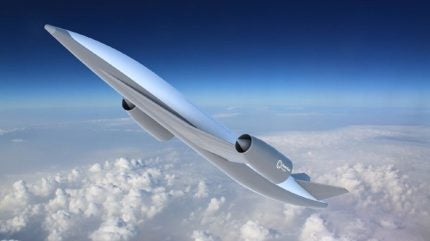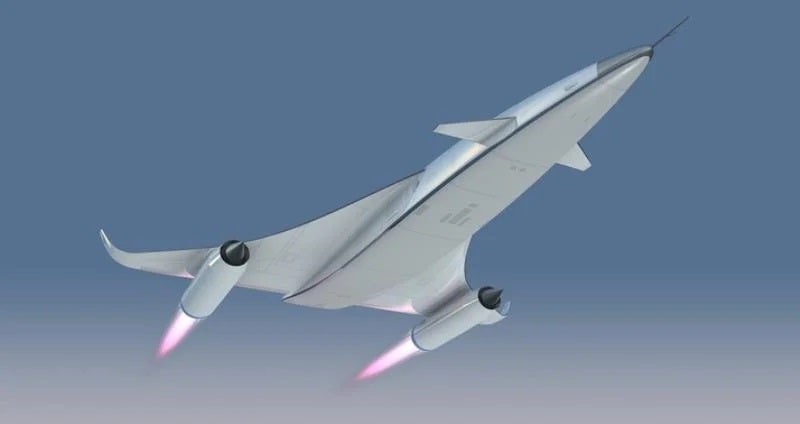
The UK Prime Minister, Keir Starmer, announced a near £1bn ($1.2bn) investment drive into the UK’s aerospace sector just days after the bankruptcy of Reaction Engines, which had been developing world-leading jet engine technology with unique military and civil applications.
In a 14 November statement from the Prime Minister’s office, it was revealed that the £975m investment over the next five years would “speed up innovation, create job opportunities, and support industry.” It mentioned “aerospace centres” in locations such as Broughton, Filton, and Derby.
The three locations mentioned in the release are the sites of leading aerospace primes in Broughton and Filton (Airbus) and Derby (Rolls-Royce).
The release added that “thousands of highly skilled jobs will be supported across the UK as the Prime Minister throws his support behind the aerospace industry”.
In early November, Oxfordshire-based Reaction Engines Limited (REL) went into bankruptcy, days after it entered administration on 31 October, with the loss of hundreds of workers. The company’s website has been suspended.

The company was famed for its ongoing work into unique air-breathing SABRE engine technology that would have had applications for hypersonic propulsion technology and space access vehicles, in both civil and military sectors.
A 2019 test saw REL achieve a world-first by cooling airflow at speeds far greater than the operational limit of any existing jet engine. During tests, Reaction Engines’ precooler technoloy is said to have handled temperatures greater than 1,000°C in less than one-twentieth of a second.
REL had been working with the US Air Force Research Laboratory since 2022 to develop its hypersonic and near-hypersonic engine technology, having first began work on the area decades earlier.
The company had also opened a new site in Denver, Colorado, to pursue opportunities in the US market.
Airforce Technology reached out to senior figures at Reaction Engines for comment but at the time of publishing had received no response.
Investment to “unlock tech of the future”
The trumpeted investment into the UK aerospace sector will see an extension of the Aerospace Technology Institute (ATI) Programme, funding through which REL received in 2021 under Project Fresson, which focussed on the development of a zero-emissions, hydrogen fuel cell aircraft demonstrator.
Reducing carbon emissions and using alternative fuels has been a key aim for the UK military, particularly the Royal Air Force, as it seeks to reach a service target of Net Zero by 2040.
Reaction Engines had also received received strategic equity investments from the Strategic Development Fund (SDF), according to its partner at the time Cranfield Aerospace Solutions.
In a 2023 joint release from Cranfield Aerospace Solutions and REL, it was stated that both companies were supported by UK and US governments through the UK Space Agency, DARPA, US Air Force, as well as leading global industry partners.
In addition, Reaction Engines had “secured equity investments from a range of industry and financial investors including BAE Systems, Rolls-Royce, Boeing HorizonX, Baillie Gifford, Schroders, and Strategic Development Fund”.
In early-November 2024 the ATI issued an expression of interest within its strategic programme sector, funded by Innovate UK, the Department of Business and Trade, and the ATI up to £685m, for companies looking for grants in the aerospace sector.
On 15 November, UK Prime Minister will visit Wales, which is claimed to have one of the “largest aerospace clusters in the world, employing over 20,000 people”, according to his office.
“The UK is at the forefront of cutting-edge aerospace industry, and by accelerating our investment we will unlock the tech of the future and take a crucial step forward in our mission to deliver growth and opportunity across our country,” Starmer said in the 14 November statement.
Hypersonics a key market for major economies
According to GlobalData’s latest Thematic Intelligence report into hypersonic technologies the re-emergence of great power competition across the world had spurred interest and investment in such systems due to potential applications in deterrence and military operations.
Due to the complexity and cost-intensive nature of the sector, the number of states able and willing to pursue projects in the field remained the purview of large economies such as China, Russia, and the United States.
Within the sector, it was judged that both major defence primes and specialist vendors had a role to play in the development and the hypersonic supply chain, although risk remained in a market described as “niche and challenging”.



